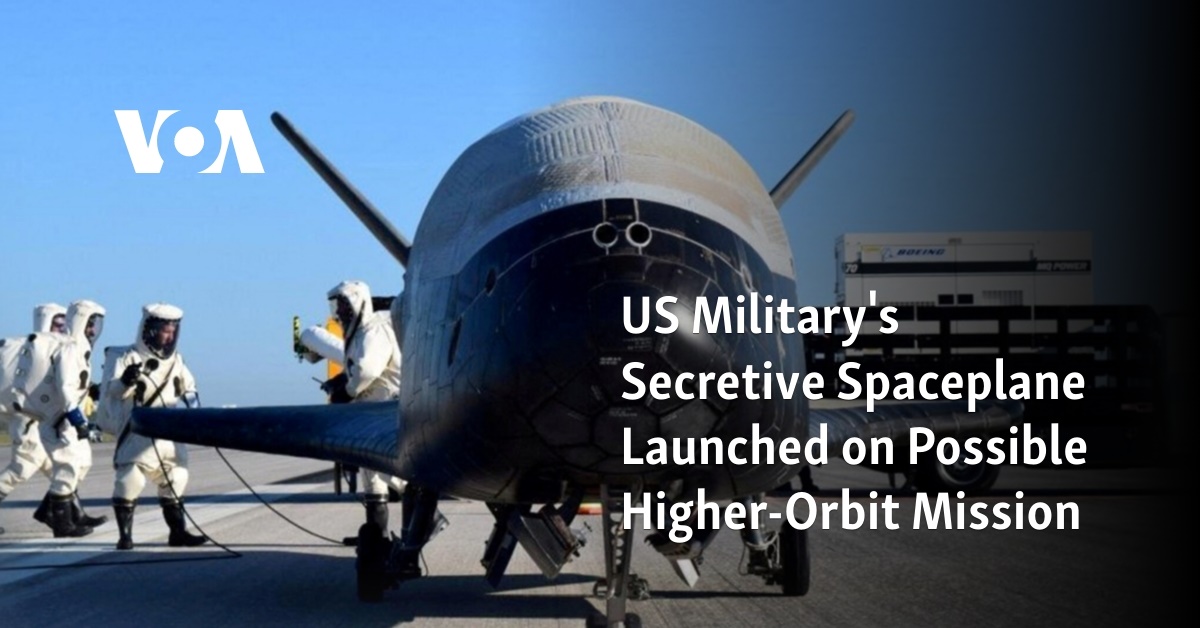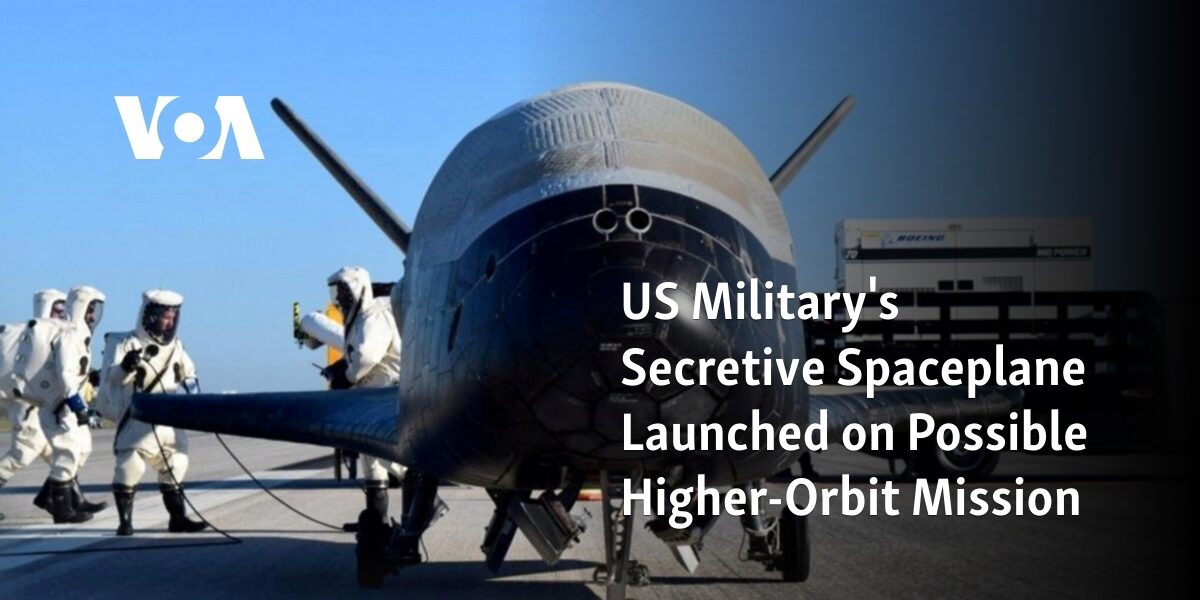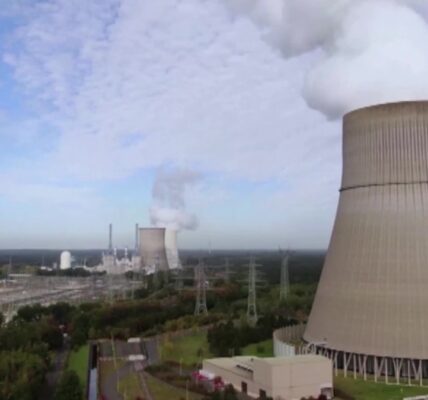The US Military has deployed their clandestine spacecraft on a potential mission to a higher orbit.
 CAPE CANAVERAL, Florida —
CAPE CANAVERAL, Florida —
The X-37B spacecraft, operated by the U.S. military, was launched on its seventh mission from Florida on Thursday evening. This was the first time it was launched on a SpaceX Falcon Heavy rocket, allowing it to reach a higher orbit than previous missions.
The Falcon Heavy, consisting of three rocket cores attached, took off from NASA’s Kennedy Space Center at Cape Canaveral in a stunning nighttime launch broadcasted live on SpaceX’s webcast.
The takeoff occurred after a period of over two weeks of unsuccessful attempts and postponements. Three previous countdowns were cancelled due to unfavorable weather conditions and unspecified technical problems, causing the ground team to return the spacecraft to its storage area before resuming the launch on Thursday.
It came two weeks after China launched its own robot spaceplane, known as the Shenlong, or “Divine Dragon,” on its third mission to orbit since 2020, adding a new twist to the growing U.S.-Sino rivalry in space.
The X-37B mission, carried out by the U.S. Space Force through the military’s National Security Space Launch program, has been shrouded in secrecy with limited information released by the Pentagon.
The spacecraft, designed by Boeing, has a similar size to a small bus and looks like a smaller version of a space shuttle. Its purpose is to release different payloads and conduct experiments with technology during extended periods of orbit. Upon completing its mission, the craft returns to Earth by descending through the atmosphere and landing on a runway, similar to an airplane.
This spacecraft has completed six missions before, starting in 2010. The first five were launched into orbit using Atlas V rockets from United Launch Alliance, a partnership between Boeing and Lockheed Martin. The most recent launch was in May 2020, using a Falcon 9 booster provided by Elon Musk’s SpaceX.
Thursday’s mission marked the first launched aboard SpaceX’s more powerful Falcon Heavy rocket, capable of carrying payloads even heavier than the X-37B farther into space, possibly into geosynchronous orbit, more than 35,000 kilometers above the Earth.
The X-37B, also known as the Orbital Test Vehicle, has previously only completed missions in low-Earth orbit, flying at heights lower than 2,000 kilometers.
New orbital regimes
The exact altitude that the spaceplane will reach during this mission has not been disclosed by the Pentagon. However, the Air Force Rapid Capabilities Office stated in a release last month that Mission No. 7 will focus on testing “novel orbital regions and conducting trials of upcoming technologies for space domain awareness.”
The X-37B is also transporting a NASA study on the impact of extended radiation exposure in space on plant seeds. This has significant implications for sustaining astronauts on long-term missions to the moon and Mars by developing the ability to grow crops in space.
On December 14, China’s Shenlong, which is also shrouded in secrecy, was transported to space using a Long March 2F rocket. This launch system is not as strong as SpaceX’s Falcon Heavy and is thought to have the capability of only delivering payloads to low-Earth orbit.
However, General B. Chance Saltzman of the Space Force stated in a press conference at a recent industry event that he anticipates China will launch their Shenlong spacecraft around the same time as the X-37B flight. He implied that this could be seen as a competitive action.
According to comments published in a U.S. aerospace journal, Saltzman stated that it’s not unexpected for the Chinese to have a great interest in our spaceplane, as we also have a great interest in theirs.
“These are two of the most observed objects in orbit while they are in orbit. It is likely not a coincidence that they are attempting to synchronize with us in terms of timing and sequence,” he stated.
The expected length of the most recent X-37B mission has not been disclosed, however it is likely to extend until at least June 2026, following the trend of progressively longer flights.
The final task stayed in space for more than two years until it landed again in November 2022.
Source: voanews.com




